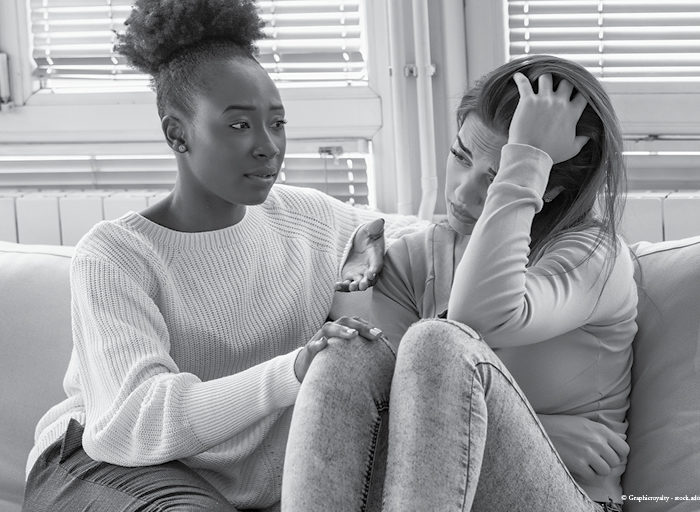
Responding to Domestic Abuse A Handbook for Health Professionals
Responding to Domestic Abuse A Handbook for Health Professionals is a new publication that will serve as a resource for health professionals who want to understand the causes, types and effects of domestic abuse on the health of both victims and their families. The publication provides information on the health implications of various forms of domestic violence, including coercive and controlling behaviors, and how to screen for and treat domestic abuse. It also describes the laws and procedures that protect battered women.
Screening tools
In order to design a successful program to prevent violent relationships, the instrument used must possess good psychometric characteristics. While there are a variety of effective tools available but more research in different populations is required.
A systematic review that was conducted in 2009 found that the most well-known IPV screening tools have varying psychometric characteristics. Particularly, sensitivity and specificity differed significantly.
The US Preventive Services Task Force (USPSTF) recommends that you combine screening tools and counseling. The USPSTF also recommends that a reliable screening tool is one with high sensitivity and precision.
The majority of screening instruments ask questions regarding psychological and physical aggression. There are some that ask about sexual violence and stalking. But, many studies have only examined some of these.
One of the most basic IPV screeners is PVS. The PVS measures the level of risk of intimate partner murder. Its three components are number of instances of abuse, the level of security, and the possibility of the situation escalating to the level of homicide.
Another instrument includes tool is the Danger Assessment. It is a 20-item score instrument, a calendar, and a risk assessment. It utilizes an ordinal frequency structure to measure the risk.
In addition to an assessment of risk in addition to assessing risk, the tool also offers an action plan for safety that will direct you toward local IPV advocacy groups. A number of organizations have created this instrument.
The Women Abuse Screen Tool (WAST) is a complete tool that tests for the physical as well as emotional effects of abuse. It’s more extensive than many tools, having eight different items and includes several lesser-known tools.
Although most screening tools contain questions on current physical violence, there aren’t any tools specifically designed for measuring the recidivism rate, which is an evaluation of the risk of abuse occurring in the future.
Screening barriers
Screening for domestic violence has been proven to improve the health of women. Alongside finding an abuse victim, screening could help a woman access legal aid. But, there are a variety of obstacles that could hinder the procedure. The research aims at identifying the barriers.
One of the most prominent obstacles is the lack of education. Lack of education could result in health professionals not have the right tools to conduct an effective screening. To counter this health professionals need to receive training and support throughout the year to ensure they’re well-equipped to conduct screening.
Another issue is the absence of guidelines and guidelines. Health professionals are often afraid of the risk of embarrassing or offending women. This can stop them from carrying out a thorough test for watching out for violence in the home.
Another obstacle could be insufficient time. Health professionals must regularly communicate with women. Insufficient time could hinder an examination and may result in a misdiagnosis.
Other barriers could be difficulties with literacy and cultural issues. The identification of the victim of domestic abuse is crucial to avoid further harm or violence.
A search of the literature identified the following studies. The studies included five qualitative and two quantitative pieces. Each article provided important information about the area.
While these studies gave lot of information, they had certain drawbacks. For instance, the study didn’t have an uncontrolled group. Additionally, the responses were not random. Therefore, the bias in response may have played a major factor.
The overall review of the literature discovered that there was some discord over the most effective methods to screen of domestic violence. Even though there isn’t a lot of conclusive evidence but this study does suggest the existence of limitations that health professionals need to take into consideration.
Health implications for the long-term
Domestic violence can cause a wide variety of long-term consequences and can affect the physical and mental well-being of those who suffer. This could include psychological issues like depression, anxiety or sleep disorders. Children can also be affected. The effects can be experienced years after the abuse is over.
Children who have been the victims from domestic abuse are more likely to have a higher risk of sexually transmitted illnesses and mental disorders. They also experience lower self-esteem, difficulty in making relationships, and low motivation.
Depression can result from abuse and sufferers tend to be more likely to experience self-harming thoughts. Additionally, a distorted perspective of relationships with intimate people can cause a negative effect.
Domestic violence can also cause unwanted pregnancies that can impact reproductive health. Some of the abusive partners will restrict using contraception.
Domestic abuse victims might resort to drugs or alcohol as a means of dealing with anxiety. They are also more likely to develop eating disorders.
The effects of abuse can lead to traumatizing brain injuries. Brain injuries can cause several long-term effects, such as Alzheimer’s disease.
The victims of domestic violence are at greater risk of developing heart disease, cancer or stroke, as well as chronic pain. Furthermore, women who have been exposed to violence are twice as likely to experience chronic fatigue syndrome and fibromyalgia.
For women, cardiovascular diseases are the most common cause of death in the world. However, the negative effects of IPV are particularly harmful for children and infants.
Women who have been victims of domestic violence have a higher chance of becoming Type 2 diabetes. People who have survived are at a higher chance of suffering from cardiovascular disease as well as stroke and heart disease.

Advocate laws and procedures for the judicial procedure to safeguard battered women
What are the most effective advocate laws and judicial processes to safeguard battered women? A little bit of research will provide you with useful suggestions and tricks to get going. Particularly, keep an eye out for the multitude of courthouse regulations that cover the availability of multilingual services as well as emergency hours and post-conviction monitoring. Based on the jurisdiction you reside in there is a chance that you will be able to be involved in the proceedings in a central courthouse. There is an American Judges Foundation offers a brochure on the subject.
Participating with the process will provide you by gaining access to a community who is dedicated in protecting the rights of its members. Apart from that this will decrease the frequency at which you need to confront a non-cooperative partner. This is particularly important when you have children. Certain courts provide family violence programs too. Making a plan of action can make things run much more smoothly.
For instance, if you’ve been a victim of family violence or domestic abuse, then you might need to file a protective order prior to leaving the door. If you do this you’ll be better positioned to safeguard yourself from your violent partner in the event that something that is unimaginable happens. If the worst-case scenario arises and you are in court, the courthouse should be able to help in finding a local shelter or safe refuge.
Another tip is to make the effort to study your personal family history. It could be that your family’s history is the reason that you’re victimized by a vicious lover. Spending the time to discover more about your personal history can help you reclaim your destiny. This is an important aim in the scheme of things.
The use of force and control is the main cause of domestic violence
The scandal of domestic abuse has resulted in a more intense concentration on coercive and control behavior. In many instances the perpetrator employs these tactics as a means to gain control over the victim. They resort to violence, both emotional and physical, and threats to induce fear and force obedience.
This has led to an increased urgency to tackle this problem within England as well as Wales. In the past year the new law was approved in Scotland to punish coercive and controlling behavior within intimate relations. The law also grants magistrates the ability to sentence people to prison for that can last up to five years for the same crimes.
Controlling and coercive behavior can be described by the term “a pattern of threats, harassment, intimidation, or abuse” that creates anxiety and stress to the person who is the subject of the behavior. These include stalking sexual assault as well as financial and psychological abuse.
While certain of these behaviors might appear “innocent”, they are extremely dangerous. Studies show that the majority of the perpetrators of control and coercive behavior in the UK are males.
The most recent statistics reveal that more than two-thirds of those who were prosecuted for coercive and control-related behavior were men. The majority of those who commit coercive or controlling behavior appear to be good parents or decent citizens.
Many victims of coercive and threatening behavior feel a sense being in a state of isolation. It is usually a result of community or personal. If they are isolated, the lines between acceptable behavior and relationships are blurred.
Anyone suffering from coercive and controlling behaviors should make sure they are wearing a change of clothes and an initial aid kit. It is also recommended to contact police in the event that they are in danger.
In certain countries, like in the United States, coercive and controlling behaviors are unlawful. Certain experts have suggested similar laws to be enacted in Australia.
FQAs….
How the role of the IDVA fits into the wider local response to domestic abuse?
What are the 3 phases in the domestic violence cycle?
- First is the tension building phase. In this phase, the batterer gets edgy and tension begins to build up. ...
- Second is the actual explosion phase where the physical abuse occurs. It can last from a few minutes to several hours.
- Third is the honeymoon phase.











